Celebrity Sudoku (26 page)
Authors: Kaye Morgan

Okay, no shocking discoveries, no new spaces filled, but we’ve cleared the way for additional developments.
The next step up the Twelve Steps to Sudoku Mastery involves searching for naked pairs. Essentially, that means looking for two spaces that share two and only two candidates. The logic runs like this: If space two on a column has only a 1 and a 9, and space eight on the same column has only a 1 and a 9, then those are the only two places in the column that can hold a 1 or a 9. They can be eliminated as candidates anywhere else along the column.
And what do you know? We’ve got a naked pair right in the first row—and right next to each other. After all the candidate assassinations in our last move, the only remaining clues in space two and space three along row one are 2 and 7. That means, traveling along the row, we can eliminate 7 as a candidate in spaces six, seven, and eight. It also means that in space eight, there’s only one remaining candidate, a 3—but we’ll get back to that.
The naked pair still has damage to do in the top-left subgrid. In that box, 2 or 7 will definitely be in the top row, and any other 2 or 7 candidates can be eliminated elsewhere, specifically in row three, space two (adios, 2 and 7), and space three in row two (good-bye, 7—hello, 6 as the only remaining candidate. Let’s put a star over it and continue for the time being.)
Meanwhile, back in column eight, what about that 3 we uncovered? Well, placing a 3 at the top of the column eliminates the only other 3 candidate down in the bottom at space nine. And doing that leaves only one viable candidate, the 5. Let’s star that and prepare to eliminate some extraneous 5 clues—and some 6 ones as well, from the 6 we uncovered in row two.
Well, cleaning up doesn’t exactly start a chain reaction of spaces to be filled—although it does force the placement of a 7 in the last open space in column eight. But things should fall into place in about seven moves. It requires simply finding a hidden single involving a 3, then a naked single and a hidden single, both involving a 5. Then there’s a row that has only a single 1, the last 6 to be found, and a hidden single involving a 4. Find all those, and the chain reaction to the end will begin.
Oh, and the reason for my husband’s conversion to the non-symmetrical side of sudoku? He tells me he likes to see the vein in my temple swell up when we argue—according to him, it’s cute. I guess he feels the same way about that as I do about full dihedral symmetry.
In sudoku as in married life, it’s all a question of aesthetics.
Puzzle Solutions
Puzzle from page 26
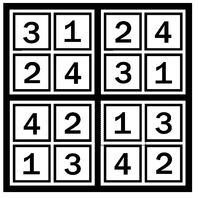
Puzzle from page 36
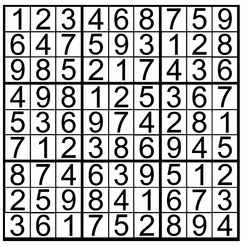
Puzzle from page 95
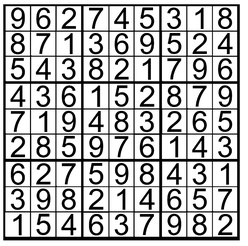
Puzzle from pages 133 and 160
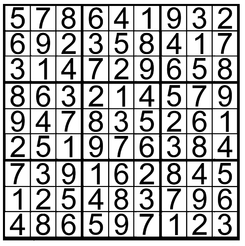
Puzzle from page 165
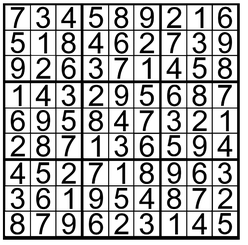
Puzzle from page 202
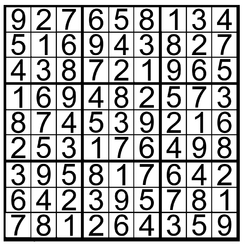


Other books
Cold Comfort by Isobel Hart
Iced On Aran by Brian Lumley
Plastic Hearts by Lisa de Jong
Pulled by Bannister, Danielle
Drysine Legacy (The Spiral Wars Book 2) by Joel Shepherd
Protagonist Bound by Geanna Culbertson
Love Inspired May 2015 #2 by Missy Tippens, Jean C. Gordon, Patricia Johns
Tamed by You by Kate Perry
Happily Ever All-Star: A Secret Baby Romance by Sosie Frost
